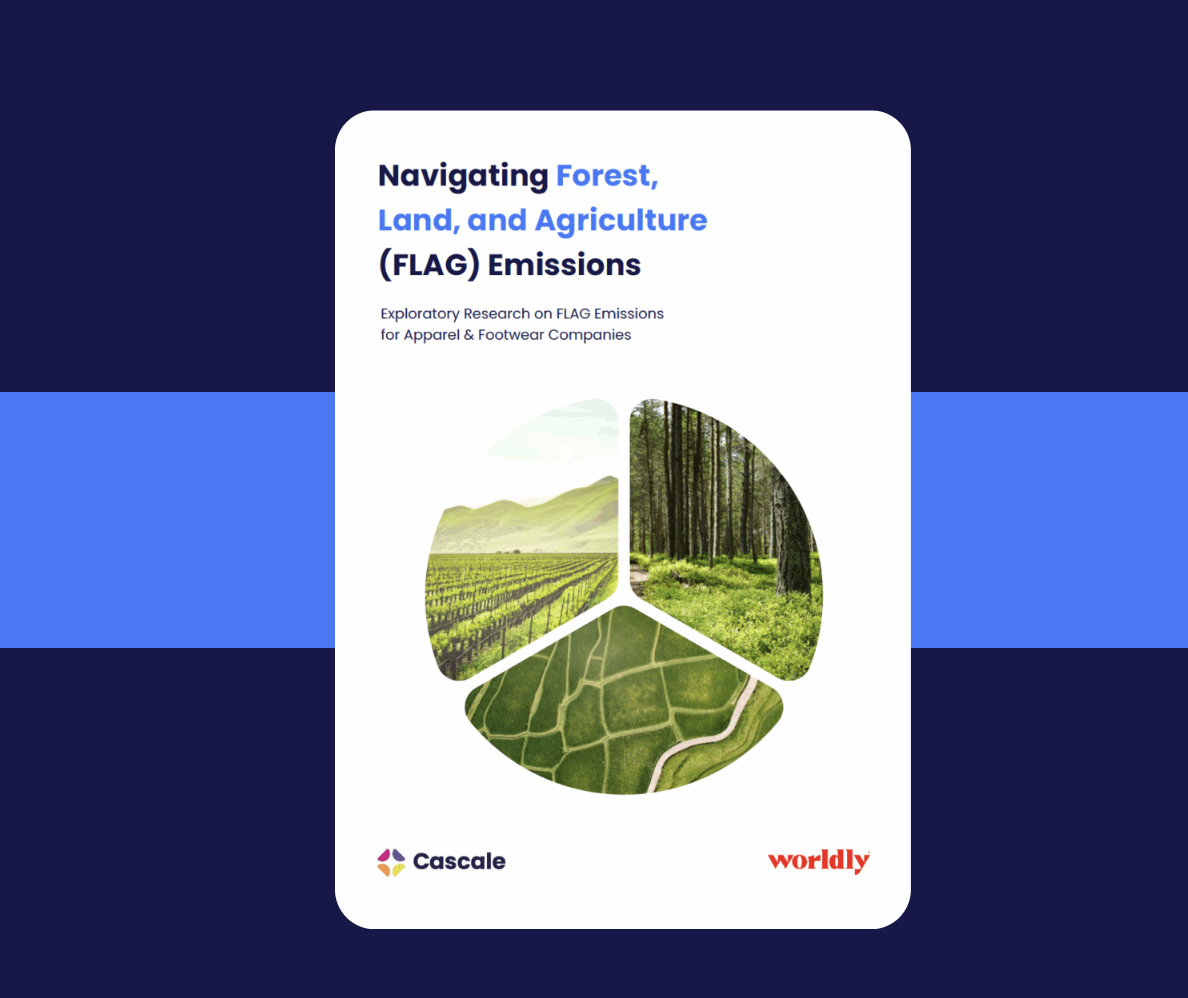
Articles
The apparel and footwear (A&F) industry is no stranger to complex supply chains and evolving climate disclosure requirements. Now, new tracking requirements for one type of emissions are drawing attention. These emissions, categorized as Forests, Land, and Agriculture (FLAG), are poised to become a critical part of science-based climate target-setting.
FLAG emissions refer to greenhouse gas (GHG) emissions that originate from forestry, land use, and agriculture activities, often occurring upstream in a product’s lifecycle. These include:
Unlike fossil fuel emissions from manufacturing or transportation, FLAG emissions are tied to the biological systems that produce the raw materials many A&F brands rely on.
Recent guidance from the Science Based Targets initiative (SBTi) and the Greenhouse Gas Protocol (GHG Protocol) is making it clear that companies must start identifying and quantifying FLAG emissions, and if these emissions exceed 20 percent of total emissions, separate FLAG targets will be required.
In response to this growing need, Worldly and Cascale have collaborated on exploratory research to help companies in the A&F space understand and estimate their FLAG emissions—using current tools like the Higg Materials Sustainability Index (MSI), while accounting for known data limitations.
According to the Intergovernmental Panel on Climate Change (IPCC)’s 2023 report, forests, land use, and agriculture were responsible for about 22 percent of global GHG emissions in 2019. These emissions typically occur upstream in the value chain—before raw materials reach factories. For apparel companies, this means emissions tied to land use change (like deforestation), fertilizer and manure use, livestock emissions, and biogenic carbon removals may all fall under the FLAG category.
Historically, these emissions have been difficult to quantify, but that’s starting to change. The GHG Protocol released a draft Land Sector and Removals Guidance in 2022, and the finalized version is expected in late 2025. Meanwhile, SBTi is encouraging companies to assess FLAG emissions now, and prepare to set targets if they exceed the 20 percent threshold.
Many apparel brands rely on the Higg MSI for emissions data tied to raw material choices. The Higg MSI includes most components of FLAG emissions, particularly land management impacts like emissions from livestock, fertilizer use, and manure.
However, a critical piece is still missing: land use change (LUC) emissions—such as those resulting from deforestation or converting grasslands—are not yet included in the Higg MSI’s global warming potential (GWP) metrics. The reason for this is largely because data on LUC emissions isn’t always complete or reliable, however, LUC emissions can be significant, especially for materials like conventional cotton and leather, which means excluding them entirely can lead companies to underestimate their FLAG footprint.
The problem with such underestimation is that companies may inadvertently fail to meet the separate FLAG emissions requirements that kick in when these specific types of emissions exceed 20 percent of their total emissions.
Despite emerging guidance, calculating FLAG emissions remains challenging because:
The Worldly + Cascale study offers a foundational methodology using conservative estimates to help companies move forward even in the face of uncertainty.
To help companies get a better understanding of their FLAG exposure, Worldly and Cascale conducted exploratory research using the Higg MSI and supplemental data from life cycle assessment (LCA) databases. The research developed standardized assumptions and conservative estimates to fill gaps—especially around LUC emissions—and modeled the impact of FLAG emissions at the industry and product portfolio level.
The findings include:
This underscores the importance of assessing FLAG emissions at the company level, based on your own specific material makeup, not just relying on industry-wide averages.
Under SBTi guidance, companies must set FLAG targets if:
Although not required, SBTi also recommends setting a FLAG target if FLAG emissions are below the 20 percent threshold, especially if a company’s material mix or sourcing strategy might shift over time.
If you’re unsure whether your company is above or below the FLAG threshold, now is the time to take action:
Attending the Cascale Annual Meeting in Hong Kong this September? Worldly will be holding a session to dive deeper into FLAG emissions.
Even if your FLAG emissions are currently below 20 percent, it’s smart to start monitoring them closely in preparation for future requirements, or to keep tabs on your proximity to the threshold.

Want to see how different material mixes impact FLAG emissions? Curious how land use change could affect your compliance outlook?
Download the full Worldly x Cascale report to get:
© 2024 Worldly. All Rights Reserved